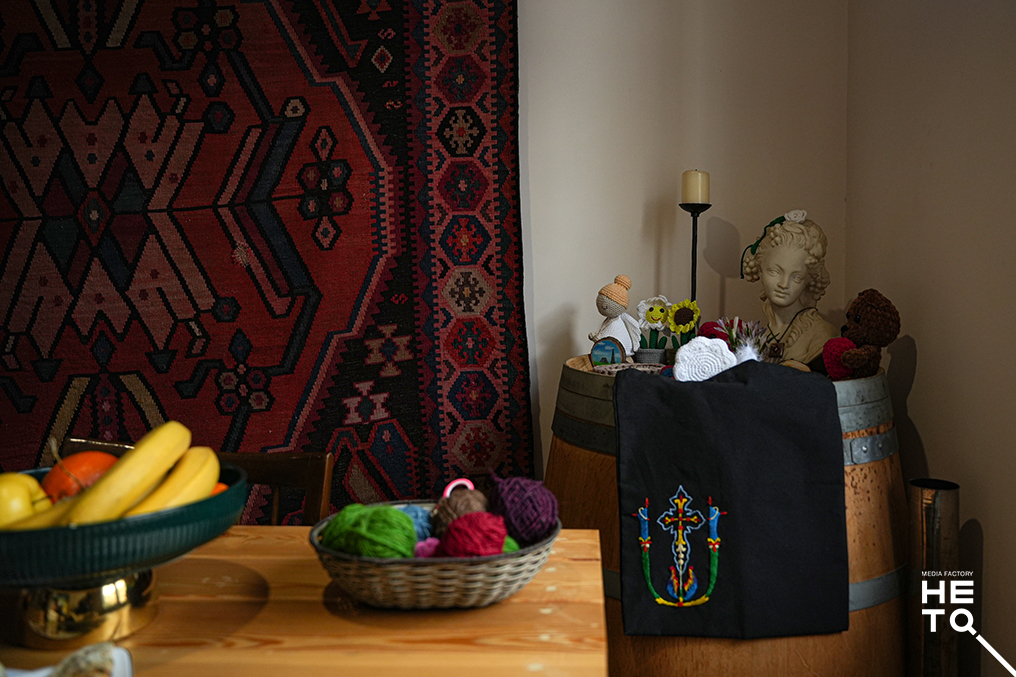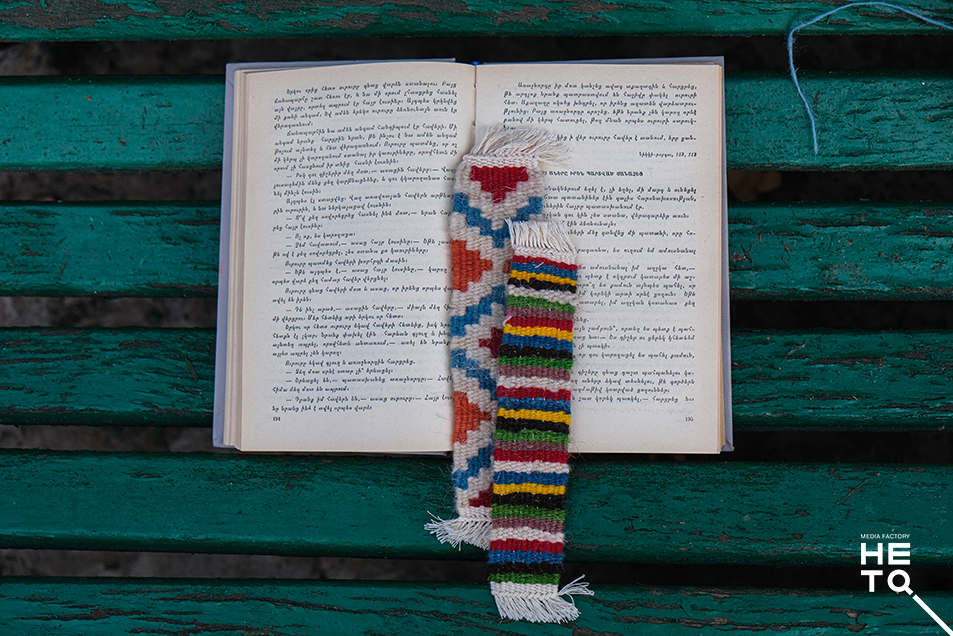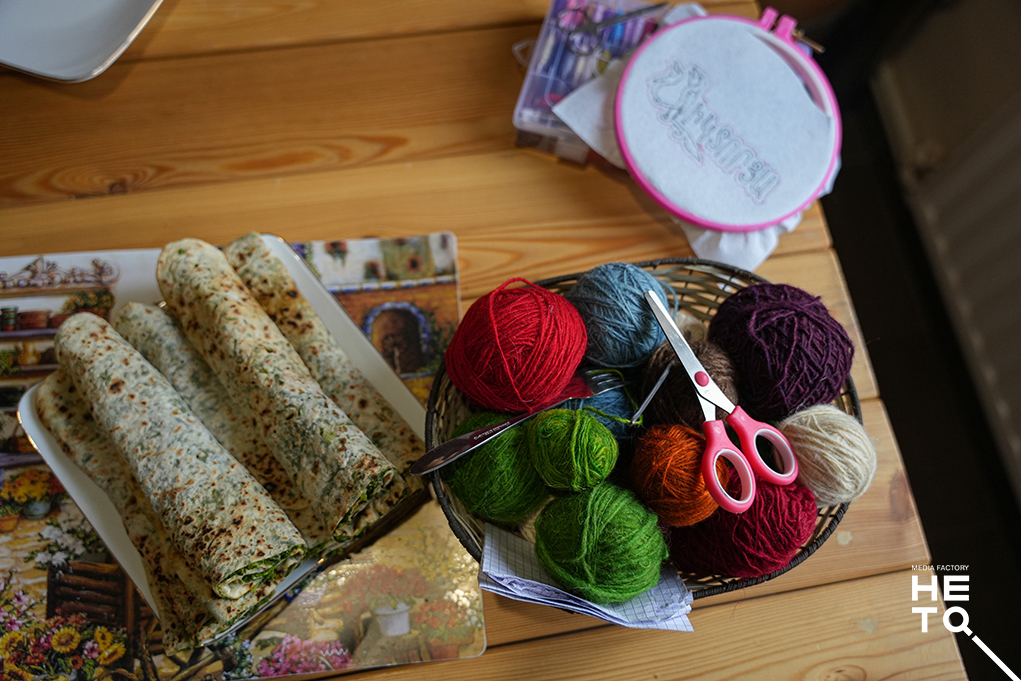In recent months, Anush from Stepanakert has been following a consistent routine. She walks a few streets up from the Garni guest house to her parents’ place and then proceeds to the "Garni Handicraft Center." At her final destination, Anush mastered the art of rug weaving within two months. Beginning with pillowcases, she now crafts small rugs.
"When crafting, I draw inspiration mostly from nature, but I find myself easily becoming bored. Hence, I weave several things simultaneously, switching between them. I always complete it once I start weaving something," says 38-year-old Anush Avanesyan.
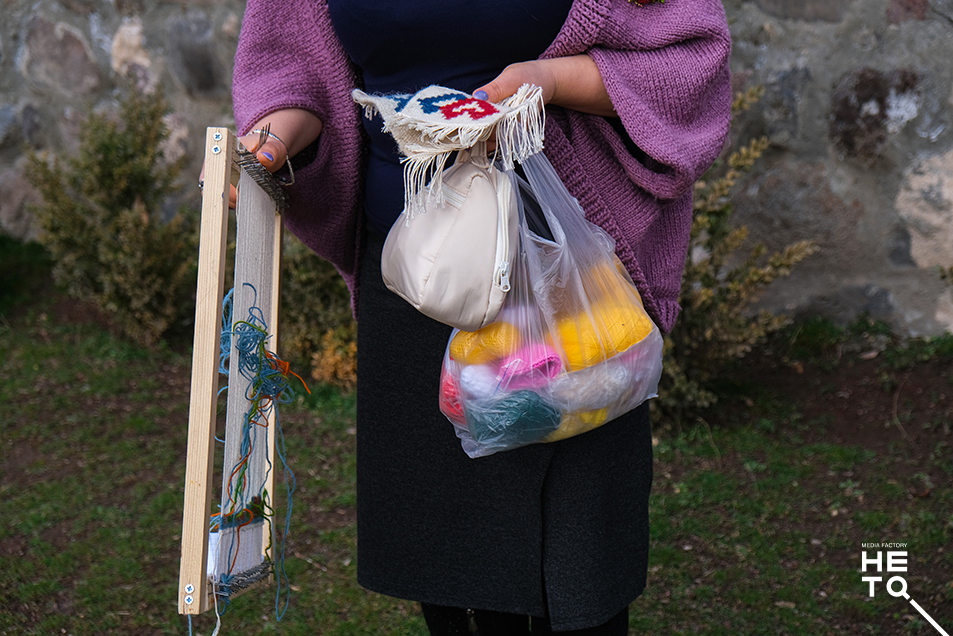

For nearly six months, Anush, her husband Vladislav, their two children, and their cat have been living in the guest house of Hmayak Babayan, a friend of Vladislav. They first arrived here in 2020 during the 44-Day War.
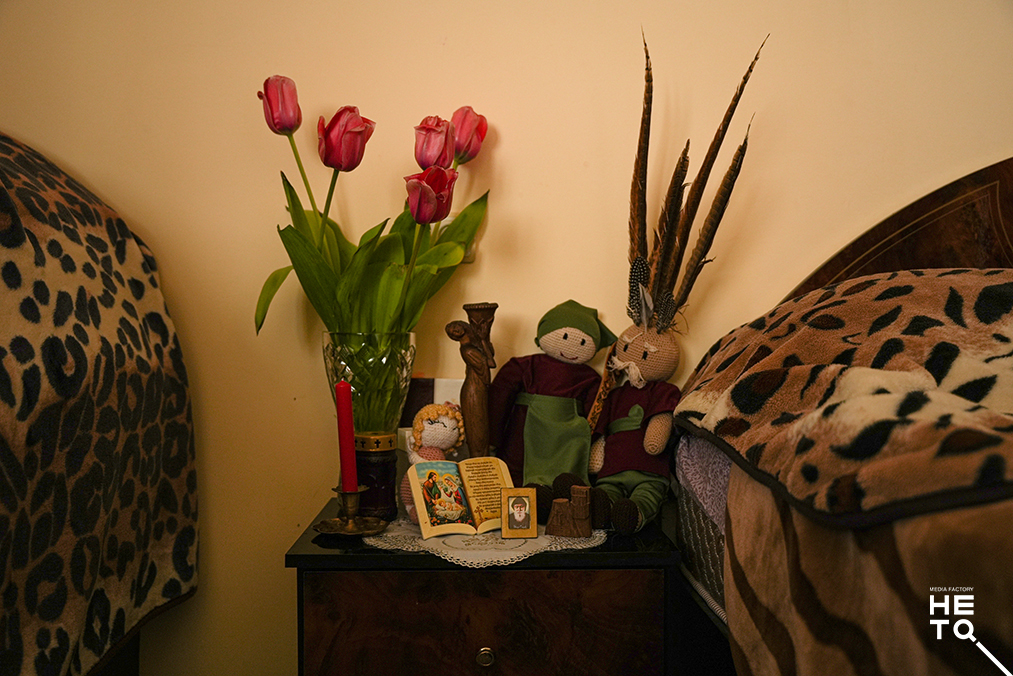
"Our spouses first became friends, followed by Lilit and me. We maintained communication, even during the blockade, and when they learned that we were arriving in Armenia, they invited us to stay at their guest house. We are eager to pay, but they insist on offering their hospitality," Anush smiles.
They were warmly welcomed, with the guest house owner showing no demands or pressure, yet they consider having a place of their own.
"In my future home, I want to have a tonir in the backyard, although I won't be baking lavash," jokes Anush.

They left Stepanakert on September 29 and arrived in Garni in three days. Even though they arrived in Armenia with four cars, the belongings accumulated over generations were too numerous to fit into any vehicle. Anush regrets leaving her grandmother's old sewing machine and her uncle's photo camera in Nagorno-Karabakh.
Anush dedicated 12 years to teaching Armenian language and literature at Khachatur Abovyan Basic School No. 1 in Stepanakert, while her husband, Vladislav Gasparyan, worked as a sapper with the “HALO Trust.”
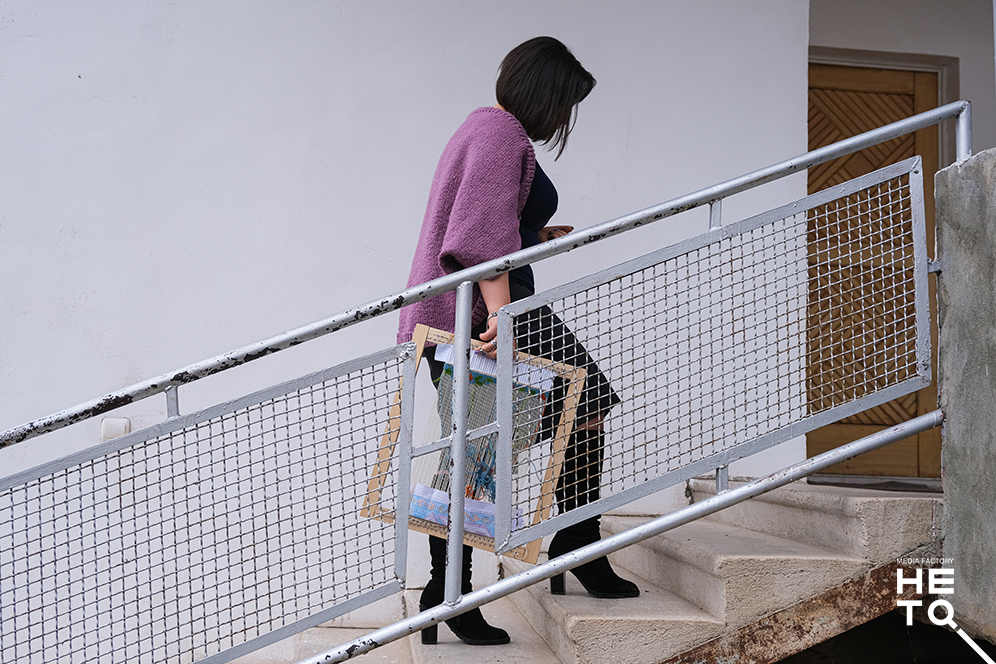
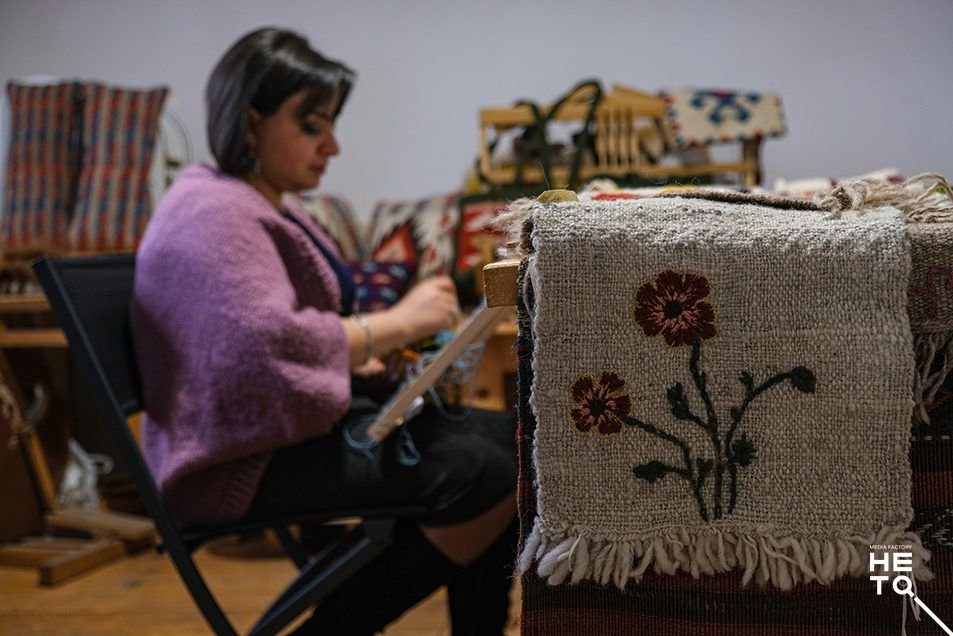
Anush began her life in Armenia by learning a new profession at the Garni Handicraft Center. She noticed an announcement for a course and applied and mastered rug weaving within two months. She started her weaving journey in December and made her first sale within the same month. With no fixed income, her earnings vary depending on the size and design of the rugs, typically ranging from 5,000 to 20,000 AMD.
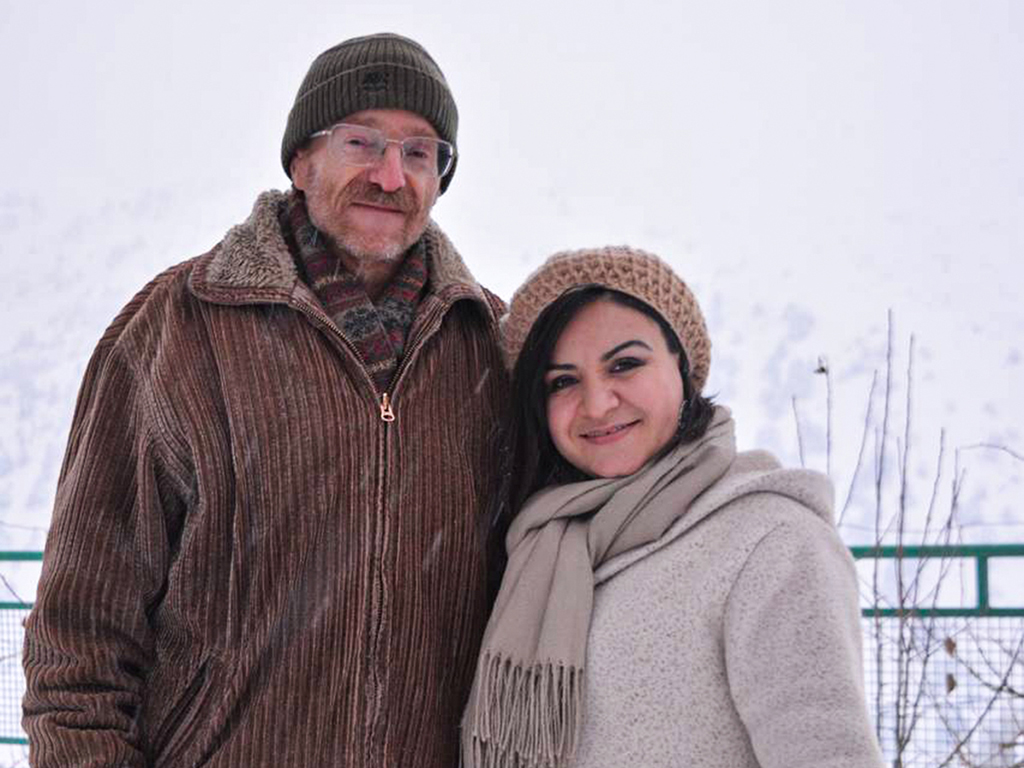
Photo from Anush's personal archive.
Currently, three residents of Nagorno-Karabakh are enrolled in courses at the Garni Handicraft Center, established in 2019 by British Carl Ulbricht.
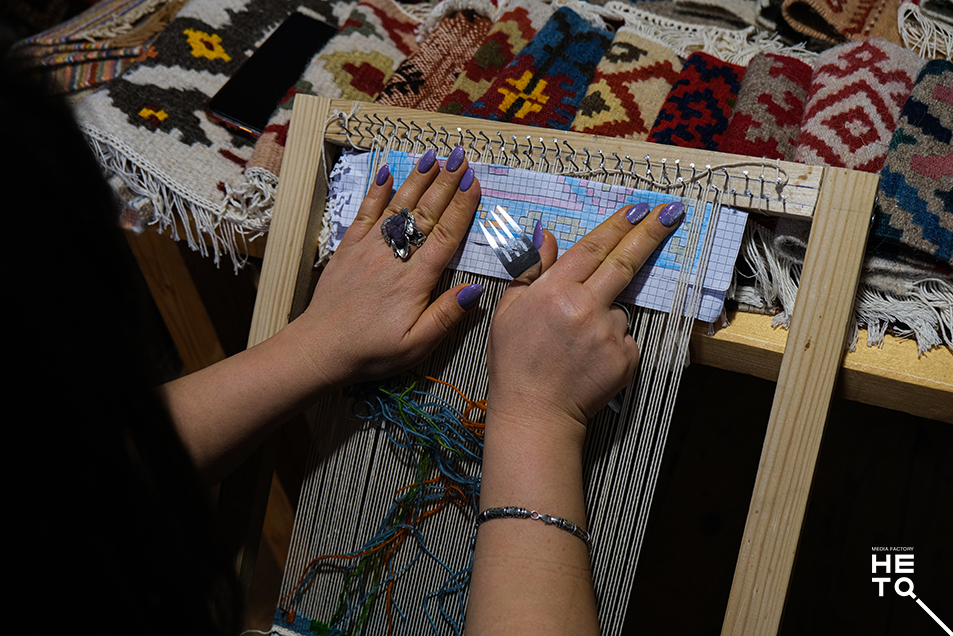

Mickey, the fifth family member, struggles the most to adapt to the new life conditions. The cat is not sociable and quickly hides under the sofa cover upon encountering a stranger.
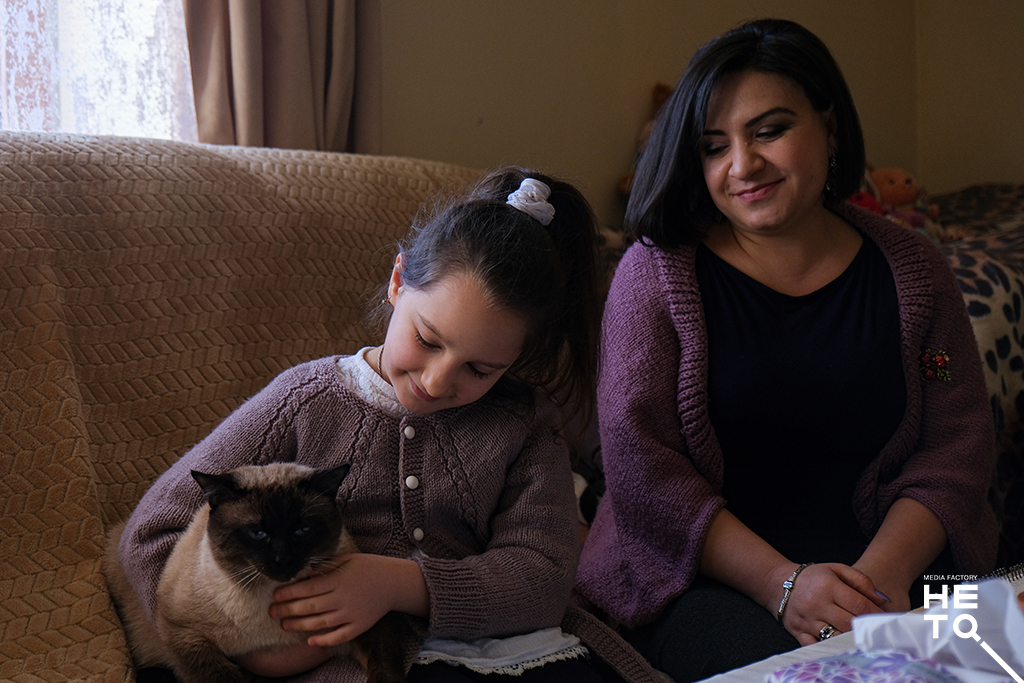
The workbench also has no permanent spot; Anush takes it with her threads daily and walks to her parents' house. There, she sets it up vertically by the window. She places the paper pattern over the woven section and fills the unfinished part by winding the thread horizontally around the workbench.

Anush's younger sister, Gohar, practices embroidery.
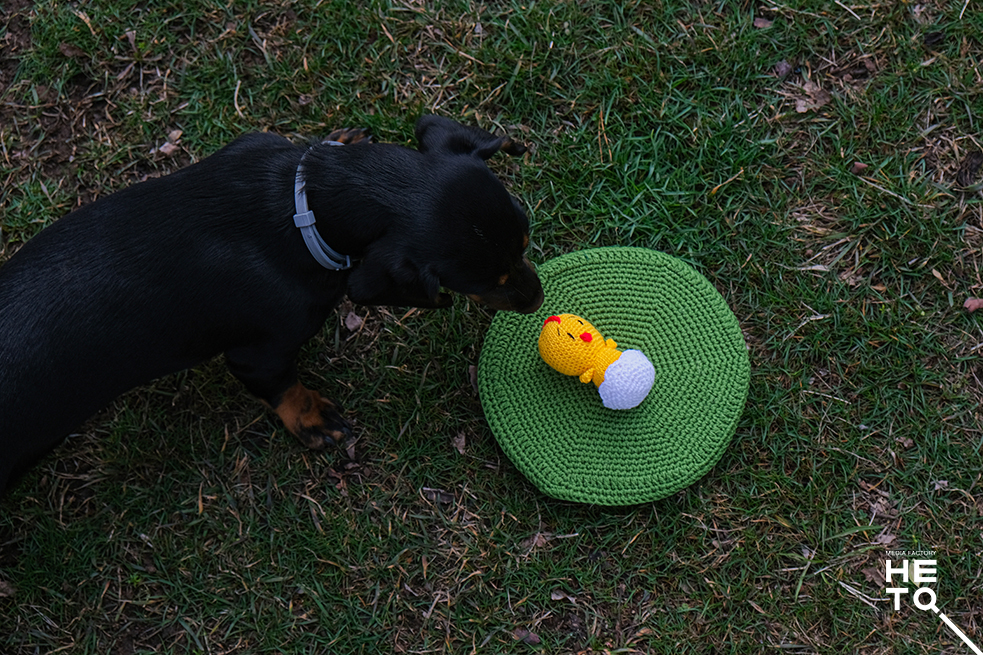
"I wanted to become a designer, but the undeveloped state of the field in Artsakh prevented me from pursuing that profession. Additionally, I could not imagine my life outside of Artsakh. Thus, I became an accountant and dedicated ten years to working at the Ministry of Education, Science, Culture, and Sports. However, the unimaginable has now turned into reality," says Gohar.
In her recent days in Nagorno-Karabakh, Gohar found an injured dog, nursed it back to health, brought it to Armenia, and arranged for adoption.
"I realized I couldn't leave it behind; it would weigh heavily on my conscience forever. I even curled up in the car to make room for the dog," she recalls.
Molly and Rocky, her parents' dogs, were also in the car.
"I mostly weave at the Handicraft Center or at my parents' place. The environment here is the most inspiring. Weaving serves as a way for me to unwind and let go of the past. If I dwell on thoughts of Artsakh while weaving, it will overwhelm me with emotion, leading to tears and affecting the quality of my work," Anush explains.
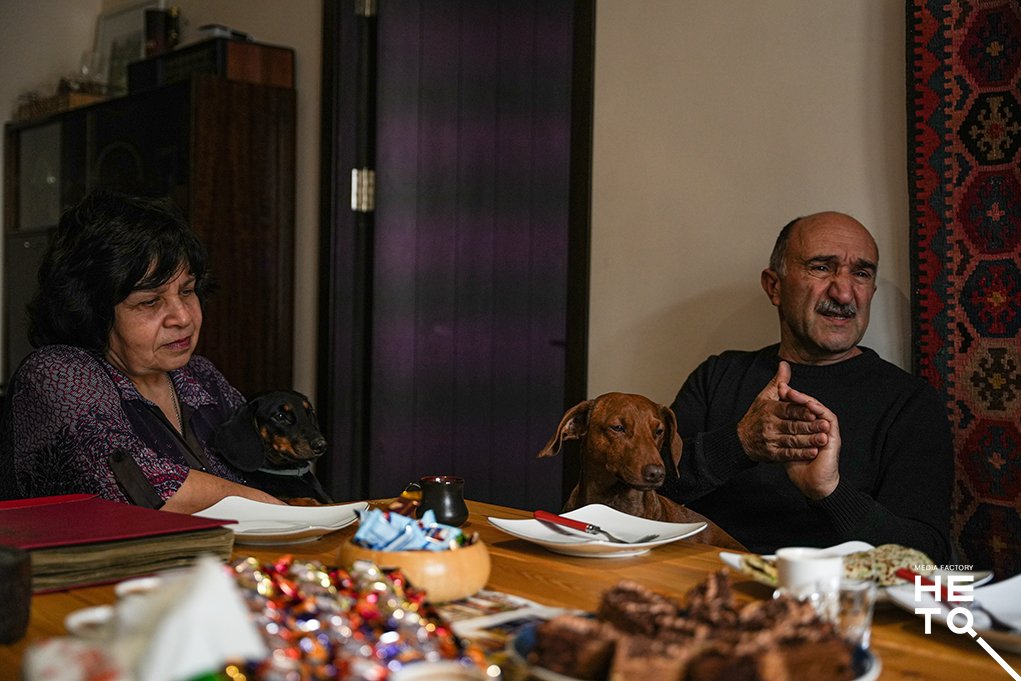
Anush's childhood home is in Stepanakert. Her parents also reside in Garni, at a relative's country house. Anahit Khachiyan, her mother, dedicated 40 years to teaching the Armenian language.
"During the first Artsakh war, when I was 8-9, a New Year mandarin was a cherished treasure. It felt like a miracle when my Mom somehow managed to find one. However, during the blockade, I couldn't provide the same experience for my own children," Anush says.
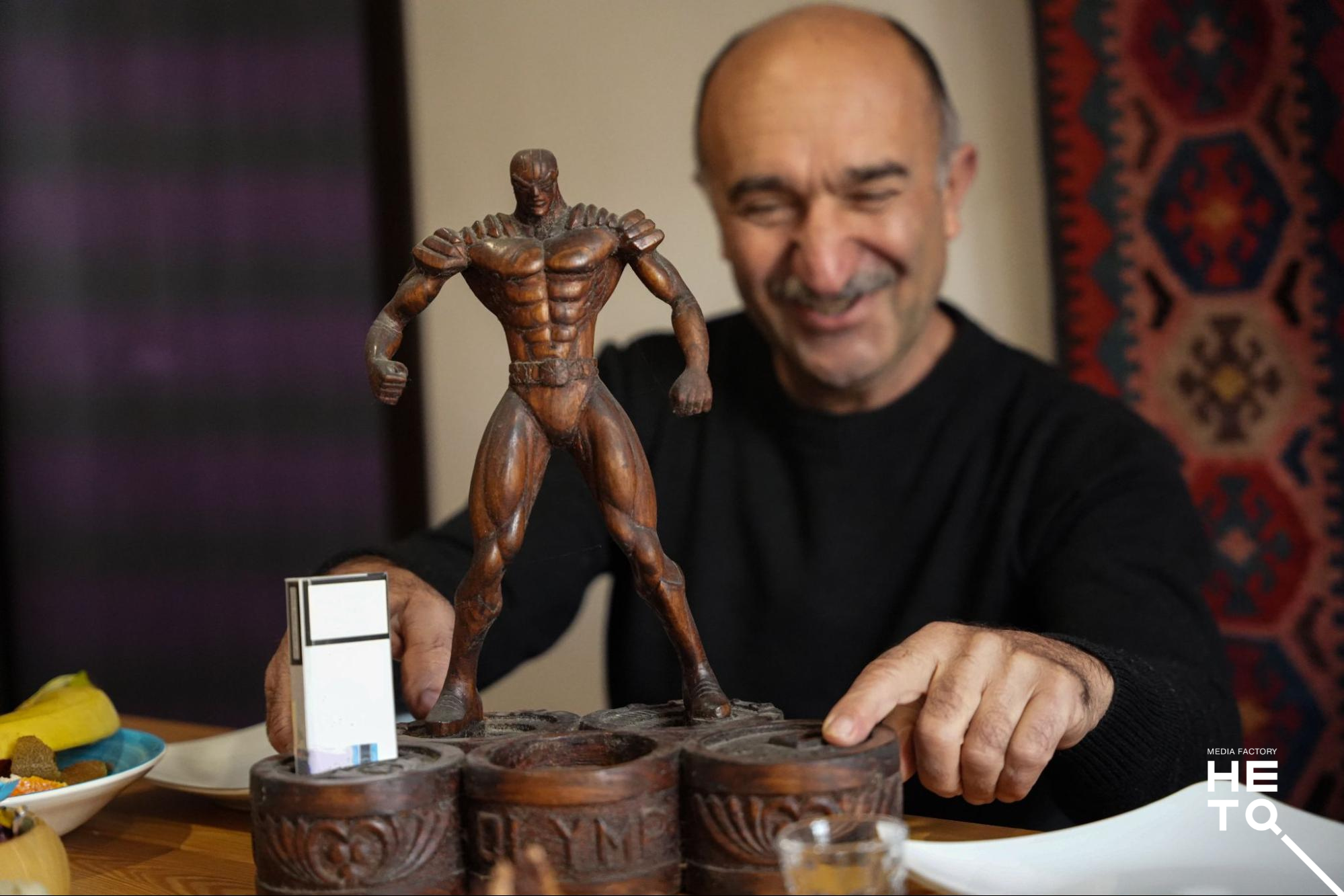
Arthur Avanesyan, Anush's father, has been a renowned gymnast, sculptor, and prominent sports figure. He dedicated many years to working at the Sports Department of the Ministry of Education, Science, Culture, and Sports in Nagorno-Karabakh.
"In our home, I'm the only one after my brother who enjoys listening to hard rock," he mentions.

Anush's uncle, Garnik, captured the early days of the Karabakh movement through his photographs. Tragically, he passed away on August 1, 1990, in a plane crash while delivering medicine to Stepanakert.
On the way to Armenia, the family hid Garnik's photo album under the back seat of the car so that it would not be found at the checkpoint.
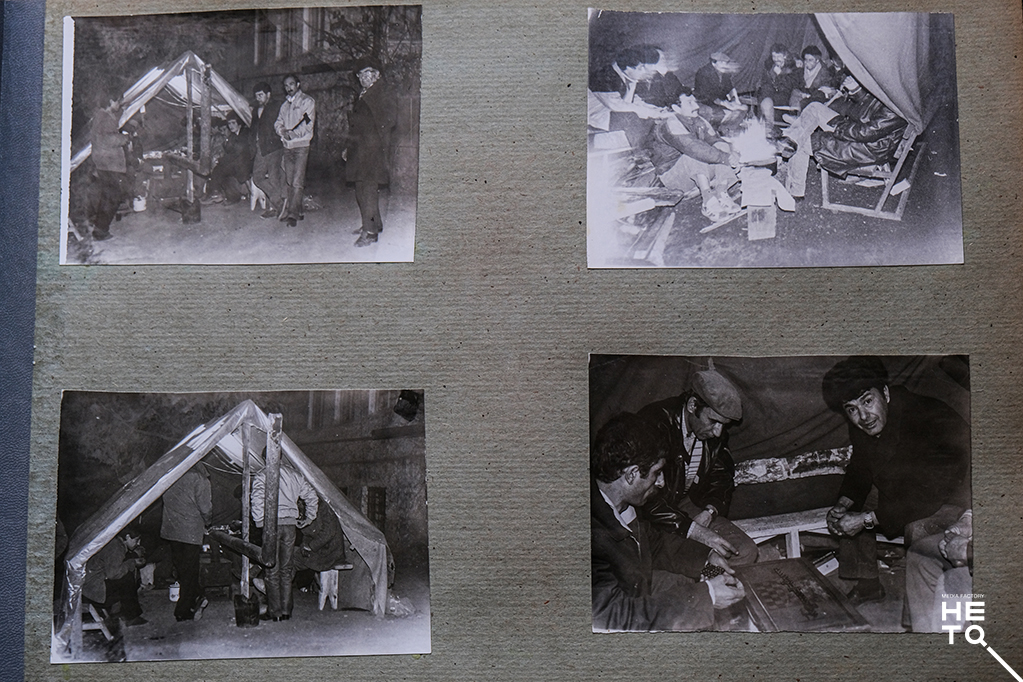
"My uncle was a rock musician who, along with his classmates, formed a band called Artsakh. He played as a solo guitarist and was offered the opportunity to pursue his career in France.
He often wore jeans and leather pants, bringing a fresh wave of rock culture to Artsakh, where such a style was uncommon. There was no one like him in Stepanakert." Anush says.
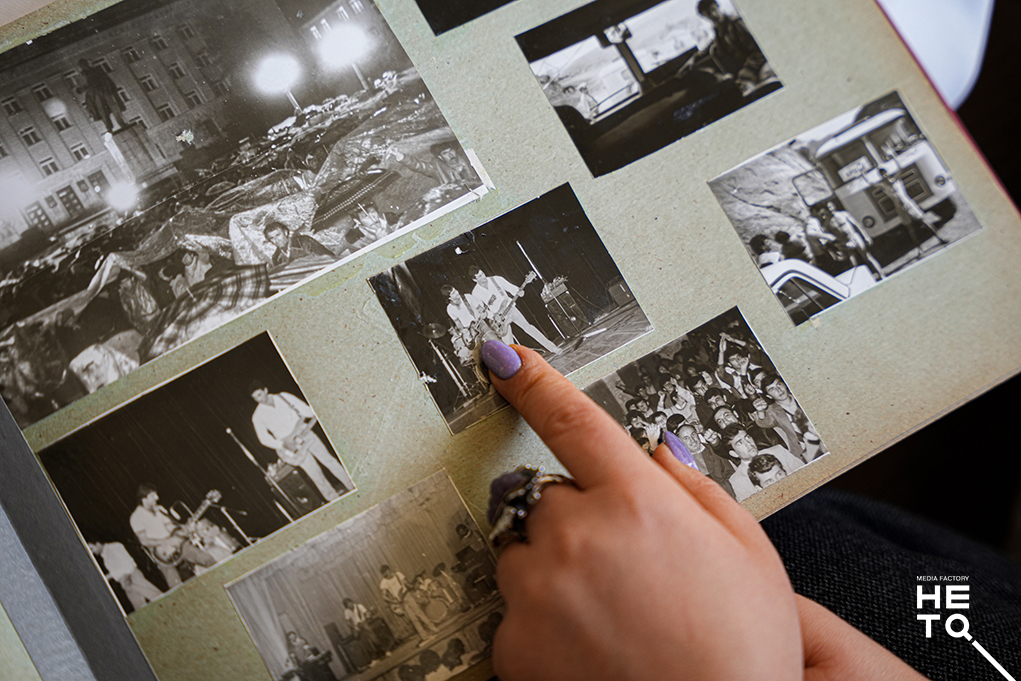
In addition to rug weaving, Anush is taking English lessons and aspires to pursue studies in directing. Each member of Anush's large family strives to carve out their own path, seeking to build a new life in Armenia. While Garni holds a special place in their hearts, their thoughts, emotions, and aspirations are deeply tied to Armenian Nagorno-Karabakh.
"We won't go back to Artsakh under these circumstances. Should my children become citizens of Azerbaijan? Should my son serve in the Azerbaijani army and fight against Armenia? Furthermore, there are potential internal threats; they will do everything with us under the guise of peace and coexistence," Anush expresses.
"I believe that we will return to Armenian Artsakh. I will witness that day even in my grandmotherly years," concludes Gohar.
Anush used to reach her workplace in Nagorno-Karabakh within 25-30 minutes, preferring to walk rather than use any transportation, including her husband's car. She continues this old habit in Garni.
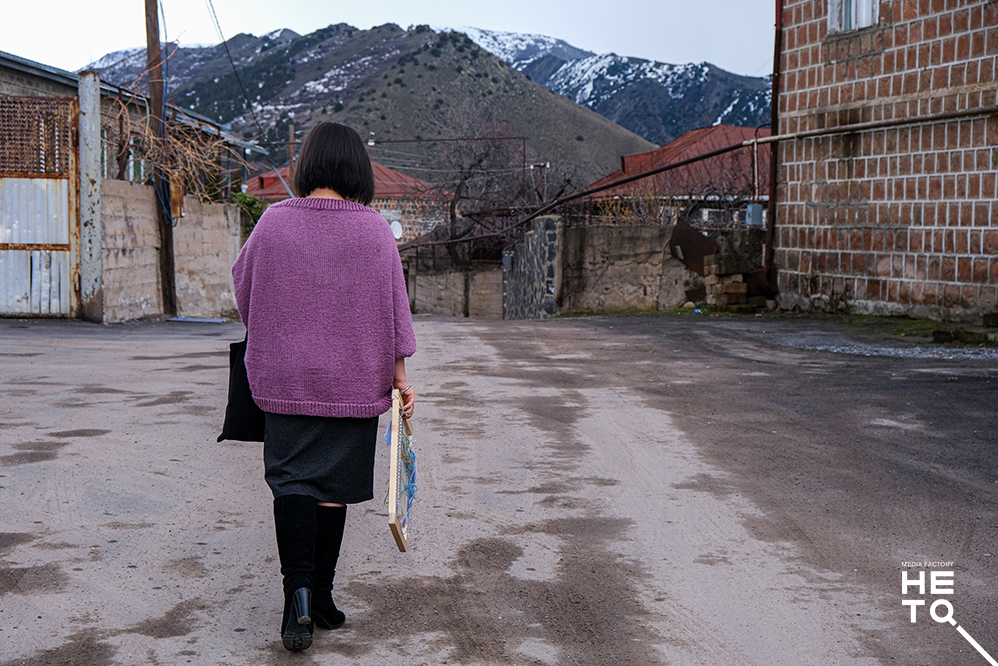
This content was created with the support of the United Nations Population Fund (UNFPA), the United Nations Central Emergency Response Fund (CERF), and the US Embassy in Armenia. The opinions expressed herein are those of the authors and do not necessarily reflect the views of the UNFPA, CERF, and the US Embassy in Armenia.

Authors
Students
Milena Avetisyan
Students
Lilit
Grigoryan
Instructor
Instructors
Mariam
Barseghyan
Team
Team
Lilit
Tarkhanyan
Team
Harutyun
Mansuryan
Team
Zhanna
Bekiryan
